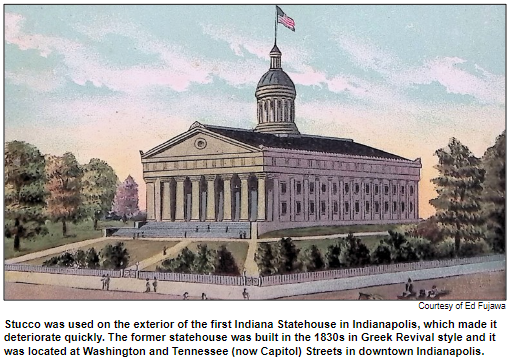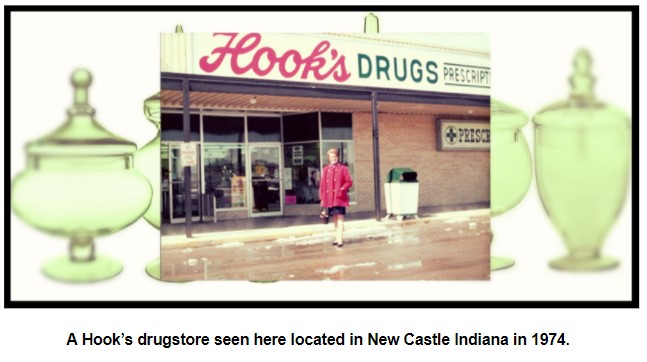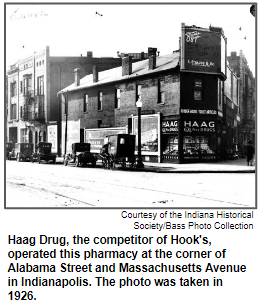Hoosier History Live is an independently produced new media project about Indiana history, integrating podcasts, website, newsletter, and social media, created and produced by Molly Head. Its original content comes initially from a live with call in weekly talk radio show hosted by author and historian Nelson Price. You can hear the show live Saturdays from noon to 1 pm ET. It’s over the air in Central Indiana at WICR 88.7 fm, or you can stream at the WICR HD1 app on your phone.
November 11, 2023
Bygone landmarks in Indy

Once there was a majestic courthouse in Marion County designed in the Second Empire style with a clock tower, spire, cupolas and statues of Greek goddesses. Once, where Butler University's campus is located today, there was a spacious park, with a boathouse for canal rides, an outdoor band shell for concerts, a roller coaster and diving horses.
 And once there was a long covered bridge that extended across the White River, enabling travelers on Washington Street in Indianapolis to make it across the waterway without getting wet.
And once there was a long covered bridge that extended across the White River, enabling travelers on Washington Street in Indianapolis to make it across the waterway without getting wet.
 These and other bygone landmarks will be the focus of our show with the author of a new book, Vanished Indianapolis, that describes the distinctive sites and explains why they went away. The author who will be Nelson's guest is Ed Fujawa, the creator of a popular blog about city history, class900indy.com.
These and other bygone landmarks will be the focus of our show with the author of a new book, Vanished Indianapolis, that describes the distinctive sites and explains why they went away. The author who will be Nelson's guest is Ed Fujawa, the creator of a popular blog about city history, class900indy.com.
Although Ed is an Indianapolis attorney, he never tried a case in the Marion County Courthouse, which was demolished in the early 1960s. (Today, the site is a plaza just south of the City-County Building, which replaced the courthouse as the home of local courtrooms and various city offices.) Constructed in the 1870s, the courthouse drew national attention because of its lavish architecture. In Vanished Indianapolis, Ed describes a daredevil in 1919 who climbed to the top of its central spire and was among the thrill seekers attracted by the building's design.
While the Marion County Courthouse was downtown, scenic Fairview Park was located north of what were then the city limits when it opened in the 1890s, before Indianapolis had developed an extensive park system. Owned initially by a streetcar company (streetcars were the most popular way for residents to access the park), Fairview had an array of attractions. They included a boathouse for watercraft (including a 60-foot paddle boat called "Indiana") that provided rides on the Central Canal. According to Ed, the boathouse was on the site of what today is Holcomb Gardens at Butler University. A roller coaster, merry-go-round and an outdoor band shell were constructed at the park during the early 1900s. Stables for horse and pony rides also were built; in addition, park goers were entertained by a pair of diving horses that plunged off a platform into a tank of water.

Vanished Indianapolis author Ed Fujawa has been a frequent Hoosier History Live guest, most recently on shows last July about rowdy areas of Indianapolis more than 100 years ago and in 2022 about the White River and its historic navigability challenges. The White River also will be discussed during this new show because bygone landmarks include the National Road Covered Bridge, which was built in the 1830s. The bridge that was more than 360 feet long enabled travelers and their horses on the National Road (known as Washington Street in Indianapolis; later U.S. 40) to cross the river. In his book, Ed describes how the dark interior of the covered bridge became "an ideal space for thieves and robbers to lie in wait for travelers crossing in the evening". Despite the eventual construction of an iron and stone bridge nearby, the wooden bridge stood until the early 1900s.
By then, the current Indiana Statehouse had been built, replacing the first statehouse constructed in Indianapolis in the 1830s. Ed and Nelson will discuss the bygone statehouse, which was designed in the Greek Revival style and deteriorated quickly. That's partially because its exterior was built with stucco, which did not hold up during Indiana winters. Even the interior of the statehouse was problematic. In 1867, a portion of the ceiling in the House of Representatives chamber crashed down. The room was unoccupied at the time, but that incident and others resulted in the statehouse being considered unsafe. It was demolished in 1878.
Your contributions help keep Hoosier History Live on the air, on the web, in your inbox, and in our ARCHIVES!


 Does it seem like a CVS or a Walgreen's can be found on every street corner? In Indiana for much of the 1900s, the drug store scene was much different, and dominated by two locally-owned rivals.
Does it seem like a CVS or a Walgreen's can be found on every street corner? In Indiana for much of the 1900s, the drug store scene was much different, and dominated by two locally-owned rivals.
 By then, though, the Haag brothers had been charged with bootlegging and spent time in prison. During Prohibition, bottles of whiskey, brandy, vermouth and other alcohol "ingredients in some of the tonics and potions sold at their pharmacies" were found on their shelves. For a while, their nephew oversaw the drug stores, which eventually were sold to various Indiana businessmen, including descendants of the famous
By then, though, the Haag brothers had been charged with bootlegging and spent time in prison. During Prohibition, bottles of whiskey, brandy, vermouth and other alcohol "ingredients in some of the tonics and potions sold at their pharmacies" were found on their shelves. For a while, their nephew oversaw the drug stores, which eventually were sold to various Indiana businessmen, including descendants of the famous 




 At the top of our newsletter and website we put notice, and links, to our newly published podcasts. We also provide a link to
At the top of our newsletter and website we put notice, and links, to our newly published podcasts. We also provide a link to 

